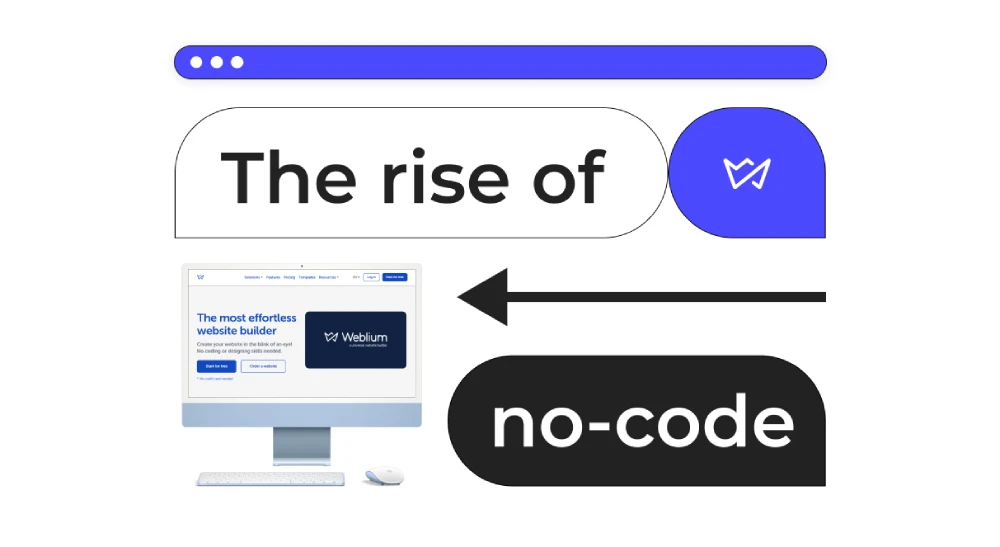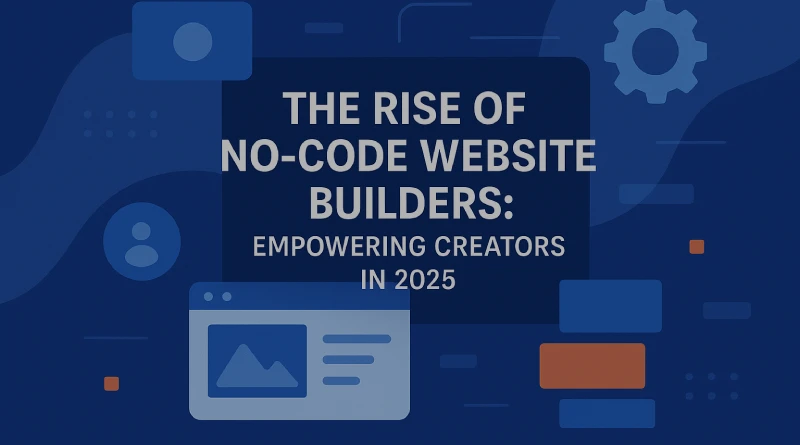The Rise of No-Code Website Builders: Empowering Creators in 2025
No-code website builders are transforming how we create online platforms, enabling anyone to build professional websites without coding expertise. Using intuitive drag-and-drop interfaces and pre-built templates, these tools empower entrepreneurs, freelancers, and small businesses to establish a digital presence quickly and affordably. In 2025, as digital accessibility becomes critical, no-code solutions are gaining traction. This article explores their benefits, trends, and practical value, offering fresh insights and credible data for an engaging, AdSense-compliant read.
Why Choose No-Code Website Builders?
No-code platforms make web development accessible to all. Their biggest advantage is speed: While traditional coding can take weeks, no-code tools enable site launches in hours. This is a game-changer for startups needing rapid iteration without costly developers. Cost savings are significant—eliminating coding expertise can cut project expenses by up to 90%. These platforms also integrate seamlessly with e-commerce, SEO, and analytics tools, ensuring sites are functional and visually appealing.
The learning curve is minimal. Platforms like Wix, with a 45% market share among DIY builders, and Squarespace offer templates for portfolios, blogs, or stores. For advanced users, Webflow balances ease with custom design control, ideal for professional-grade sites.
Market Trends and Data Insights
The no-code sector is thriving. The global website builders market, valued at $2.02 billion in 2024, is expected to reach $3.71 billion by 2033, growing at a 7.0% CAGR. The broader low-code/no-code market could hit $187 billion by 2030, up from $10 billion in 2019. Analysts predict 70% of new enterprise apps will use these technologies by 2025, compared to under 25% in 2020. This growth reflects a shift toward efficient solutions amid a global developer shortage.

Locally, no-code tools are empowering emerging markets. In regions like India and Africa, where internet access is soaring, small businesses use platforms like Bubble or Adalo for localized e-commerce. For example, Kenyan entrepreneurs create mobile-optimized shops, tapping into a market where 65% of apps are no-code, delivering a 362% ROI. These tools support regional languages and currencies, fostering economic growth with culturally relevant designs.
Unique Insights and Emerging Trends
AI integration is reshaping no-code platforms. Features like AI-driven design suggestions and automated content creation enhance personalization. Hyperautomation—blending no-code with AI and robotic process automation—streamlines tasks like inventory updates for e-stores. A lesser-known trend: No-code is fueling the gig economy, with freelancers offering “website-as-a-service” models, allowing real-time client collaboration and cutting revisions by 50%.
Challenges remain, such as limited customization for complex needs. To succeed, choose platforms aligned with your goals—Shopify for e-commerce, Framer for creative portfolios. Test features via free trials and prioritize mobile responsiveness, as 32% of users now build sites with self-led tools.
Why No-Code Matters
No-code website builders are more than tools—they’re catalysts for innovation. They lower barriers, boost productivity, and empower everyone from local artisans to global marketers. Start experimenting today to bring your vision online, no coding required.
Disclaimer
The information presented in this blog is derived from publicly available sources for general use, including any cited references. While we strive to mention credible sources whenever possible, Website Development Company in Mumbai does not guarantee the accuracy of the information provided in any way. This article is intended solely for general informational purposes. It should be understood that it does not constitute legal advice and does not aim to serve as such. If any individual(s) make decisions based on the information in this article without verifying the facts, we explicitly reject any liability that may arise as a result. We recommend that readers seek separate guidance regarding any specific information provided here.

